faith vacancy
Pope John Ricciolo 1st does have a nice Ring.
(John Ricci likely fits better in that other faith league)
Last edited:
Cause and solution -
Here's the deal: You tell me the correct cause and solution and win a free trip somewhere --
We have a 4A transformer used for a small power amp (Signal Transformer 80-4). A full wave rectifier and two 10,000mfd filter caps with just a 5.6K bleeder. On the left cap we monitor the voltage across it. On the right cap we place a 10 Ohm load momentarily (1.5A). The volt meter shows the affect of loading on the opposite side rail. And, on the scope we see that the dip from loading the Other side and then a spike when the load is removed.
Q: What caused the spike on the opposite rail and what will minimize it with the fewest parts.
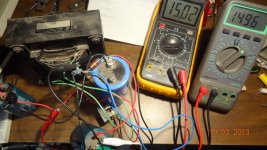
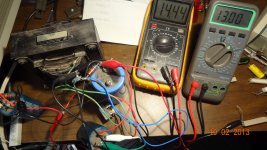
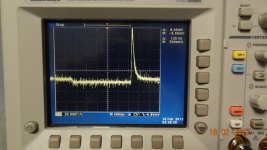
Here's the deal: You tell me the correct cause and solution and win a free trip somewhere --
We have a 4A transformer used for a small power amp (Signal Transformer 80-4). A full wave rectifier and two 10,000mfd filter caps with just a 5.6K bleeder. On the left cap we monitor the voltage across it. On the right cap we place a 10 Ohm load momentarily (1.5A). The volt meter shows the affect of loading on the opposite side rail. And, on the scope we see that the dip from loading the Other side and then a spike when the load is removed.
Q: What caused the spike on the opposite rail and what will minimize it with the fewest parts.



Last edited:
If your faith is strong enough, they have a vacancy for that currently down in Italy
jan
Jan,
It is not Italy! Just surrounded by it.
1/f Noise, Brownian Noise Audible Effects....
Perhaps this subject should be given it's own thread, however since there are so many high calibre participants here I pose the question...
What are the deep sonic implications and sonic effects of the likes of 1/f noise and Brownian noise in typical audio stages and sytems, and additionally in RF reciever stages and systems.
Dan.
Perhaps this subject should be given it's own thread, however since there are so many high calibre participants here I pose the question...
What are the deep sonic implications and sonic effects of the likes of 1/f noise and Brownian noise in typical audio stages and sytems, and additionally in RF reciever stages and systems.
Dan.
And what to do to minimize it at the supply level (not by increasing PSRR of amp) - all our (esp. power) amps with this type PS do this. So..... ?Collapsing magnetic field when load removed!
Last edited:
3 caps shown but only 2 are being used.One capacitor is disconnected?
Chris
Wine testing of audio systems seems a good image... of a strange deviation. What we need is love and understanding of music and their instruments.
And it is where 'audiophiles' make a big mistake.
To give an image, it is like, when you are looking in the police office to photos of criminals, and you answer with the model of the camera which had took each photography. Or, about literature, to look at the paper instead of the text.
To be able to discern all the artifacts of an audio system (a make believe system) is may-be helpful for a designer to cure problems, it is not the way to enjoy, as a customer, what it is supposed to give. And all those audiophiles reviews which give awards are just a marketing scam.
I believe the good way is to concentrate our imagination on the music's landscapes, and try to forget all the artifacts which inevitably will blur them. To be an expert of blur is stupid, and i laugh to audiophiles, listening endless the same little pieces of record, comparing cables to cables. Listening to their system instead of the music it is attended for.
They finish often with a system, impressive on some aspects , shining everywhere, yes, but no more correlated with the crude and banal life of the music. And i'm sure that, if they were obliged to chose between a real guitar and one of those audiophile systems, they would not chose the poor guitar.
Each time i was invited in an audiophile room by a guy who wanted to impress-me with his equipment, i was choked to hear how far they were from the real, comparing to mine, build with care but a non egocentric way. You know, like those Wilson speakers, or, at the time, those ESS.
And it is where 'audiophiles' make a big mistake.
To give an image, it is like, when you are looking in the police office to photos of criminals, and you answer with the model of the camera which had took each photography. Or, about literature, to look at the paper instead of the text.
To be able to discern all the artifacts of an audio system (a make believe system) is may-be helpful for a designer to cure problems, it is not the way to enjoy, as a customer, what it is supposed to give. And all those audiophiles reviews which give awards are just a marketing scam.
I believe the good way is to concentrate our imagination on the music's landscapes, and try to forget all the artifacts which inevitably will blur them. To be an expert of blur is stupid, and i laugh to audiophiles, listening endless the same little pieces of record, comparing cables to cables. Listening to their system instead of the music it is attended for.
They finish often with a system, impressive on some aspects , shining everywhere, yes, but no more correlated with the crude and banal life of the music. And i'm sure that, if they were obliged to chose between a real guitar and one of those audiophile systems, they would not chose the poor guitar.
Each time i was invited in an audiophile room by a guy who wanted to impress-me with his equipment, i was choked to hear how far they were from the real, comparing to mine, build with care but a non egocentric way. You know, like those Wilson speakers, or, at the time, those ESS.
Last edited:
choked to (h)ear how far they were from the real, comparing to mine, build with care but a non egocentric way.
You got me impressed, santé.
Attachments
...I have noticed, that beyond the 'banter' here of what is correct and what is not correct, it is almost impossible to get follow-up on even a working schematic that I put up. ...
Well I for my part would like to discuss the phono stage you have shown (especially because
it would be doable with parts still available to the general public - as opposed to the Parasound JC-2 line stage (P-channel fets)) and probably build it.
But I rather start a new thread for that, here seems not to be the right place, the topics change too fast.
(Including those that are off topic, actually)
Last edited:
Here's the deal: You tell me the correct cause and solution and win a free trip somewhere --
Richard I don’t participate in the contest because I don’t know the answer.
However scratching my head over the +/- rails bridging cap issue, yesterday I did some simulations (attached screenshots).
I am not into simulations and what I did may be naïve, but I was expecting for it to show changes on the center (0V) rail noise. (*)
It didn’t, and I don’t trust the results. When I have time I will do some real tests.
George
(*) When I first experimented with the bridging cap some years ago, I was monitoring the 0V rail current and I had seen the improvement there, alas I don’t find records from these tests.
Attachments
-
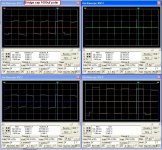 09 Bridge cap 1000uf polar.JPG176.1 KB · Views: 35
09 Bridge cap 1000uf polar.JPG176.1 KB · Views: 35 -
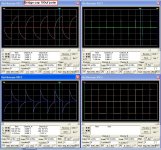 08 Bridge cap 100uf polar.JPG175.7 KB · Views: 37
08 Bridge cap 100uf polar.JPG175.7 KB · Views: 37 -
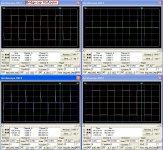 07 Bridge cap 10uF polar.JPG172.2 KB · Views: 35
07 Bridge cap 10uF polar.JPG172.2 KB · Views: 35 -
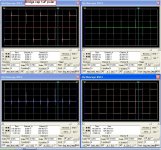 06 Bridge cap 1uf polar.JPG173.8 KB · Views: 36
06 Bridge cap 1uf polar.JPG173.8 KB · Views: 36 -
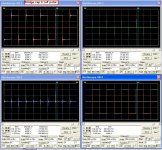 05 Bridge cap 100nF polar.JPG174.1 KB · Views: 39
05 Bridge cap 100nF polar.JPG174.1 KB · Views: 39 -
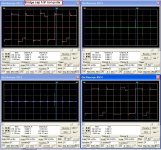 04 Bridge cap 1nF non polar.JPG174.7 KB · Views: 143
04 Bridge cap 1nF non polar.JPG174.7 KB · Views: 143 -
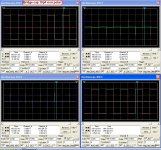 03 Bridge cap 10pF non polar.JPG174.1 KB · Views: 145
03 Bridge cap 10pF non polar.JPG174.1 KB · Views: 145 -
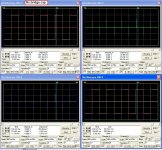 02 No bridge cap.JPG173.1 KB · Views: 154
02 No bridge cap.JPG173.1 KB · Views: 154 -
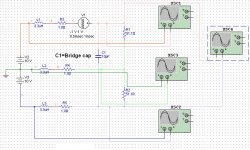 01 Schematic of simulation.JPG120.5 KB · Views: 156
01 Schematic of simulation.JPG120.5 KB · Views: 156 -
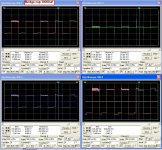 10 Bridge cap 10000uf polar.JPG175.9 KB · Views: 37
10 Bridge cap 10000uf polar.JPG175.9 KB · Views: 37
Precisely nothing impressive as long as you do not play at higher level than real.You got me impressed, santé.
By the way, i sometimes make my friends listen to some new record i think they will love, i never talk about hi-fi with them.
It was a tool, as a sound engineer, for me, did we talk about our tools ?
Now if you could only make a red wine without sulphates perhaps I could actually drink one of these expensive wines and appreciate it! In the mean time it is an upset stomach at the least and a headache just waiting to happen. Food and wine tasters are indeed a special breed. I think I would weigh a ton if I lived in a country like France known for there gastronomical delights. But I can hold my own in the kitchen as long as you do not like bland food, I can't seem to make any of that!
Christophe,
You are correct most of the audiophiles would choose there systems over a nice Martin D28 or Grand piano. It is so obvious when listening to a female vocal or a piano playing that you are not listening to the real thing, the dynamics are just not there and the tonality is just lost on most of these systems. I have never heard a piano sounding like so many audio systems produce and at the low levels that don't approach the sound level or the attack of a real keyboard.
You are correct most of the audiophiles would choose there systems over a nice Martin D28 or Grand piano. It is so obvious when listening to a female vocal or a piano playing that you are not listening to the real thing, the dynamics are just not there and the tonality is just lost on most of these systems. I have never heard a piano sounding like so many audio systems produce and at the low levels that don't approach the sound level or the attack of a real keyboard.
Perhaps this subject should be given it's own thread, however since there are so many high calibre participants here I pose the question...
What are the deep sonic implications and sonic effects of the likes of 1/f noise and Brownian noise in typical audio stages and sytems, and additionally in RF reciever stages and systems.
Dan.
Dan,
Thanks for coming back to this, because I think Dave was wrong but I didn't have time to reply when it came up and then it was gone again.
Brownian noise is not quite the right term here, for electronics the term would be thermal (or Johnson) noise.
From what I have measured thus far in the field of analog filters, amps and power supplies, there only is a small region at the low Hz side of the scale that shows the typical downward slope of 1/f noise. Typically this region would be below 100 Hz. Subsequently what you see is that the 1/f noise gets buried under the other noise components. Johnson noise is part of it, but there is also PS hash, pick up and stuff that happens within active components. Improvements in those fields will typically lead to lower noise, but still I don't see 1/f noise come through.
To prove my inkling: the 50Hz residue which is so difficult to get rid of almost always pokes high above the other (unexplained) 1/f phenomena.
So, I may be wrong, but from what I have seen 1/f isn't a huge factor.
- Status
- Not open for further replies.
- Home
- Member Areas
- The Lounge
- John Curl's Blowtorch preamplifier part II
